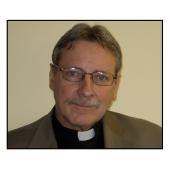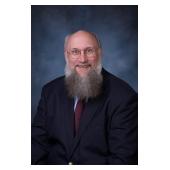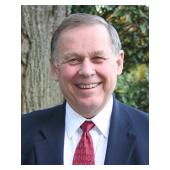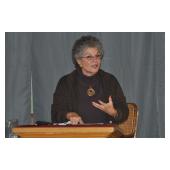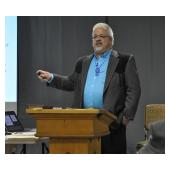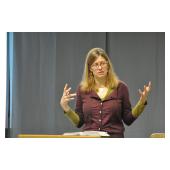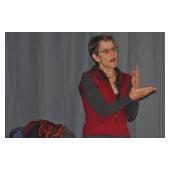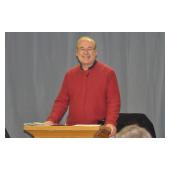Main menu
- Board Members
- Store
- Course Faculty
- Mission and Partnership
- Online Learning
- Staff
- Synodically Authorized Ministry
- Study Materials (Free)
LSM Podcasts-2012-2013
Book of Faith Meets Missional Church: How do Lutheran congregations, households and individuals become missional outposts in their own communities, as well as the world. This series considers key missional New Testament documents, and then confers with both theorists and practioners about how to put wheels on this train in our own households and congregations.
Craig Nessan (Academic Dean and Professor of Contextual Theology, Wartburg Seminary), Beyond Maintenance to Mission: A Theology of the Congregation
This course focused on key theological themes and practical directions for equipping the saints for the work of ministry, building up the body of Christ” (Ephesians 4 ). Worship is at the center of all congregational life. Yet many times we fail to grasp what God is seeking to make of us through the practices of worship. Jesus came to proclaim and embody the inbreaking of God’s kingdom. This selfsame kingdom is what God is making of us, the church, at worship in Word and sacrament. All “inner mission” and “outer mission” of the congregation derives from what we profess and enact at worship. This includes a comprehensive understanding of stewardship, the engagement in evangelizing, and the service of shalom for the mending of the world.
David Tiede (Past President of Luther Seminary and past Bernhard M. Christensen Professor of Religion and Vocation, Augsburg College), Apostolic Israel: How the Communities of Jesus were Scripturally Formed to Serve God’s Mission
The Bible is the Church’s Book of Faith, and every assembly of believers is a community of interpretation in its worship, witness, and action. These sessions explored how Jesus and his communities of followers heard God’s apostolic calling to them in Israel’s scriptures. The Holy Spirit is at work both in what is written and how you read the scriptures.
Diane Jacobson (Director of the Book of Faith Initiative)
Alive in Our Congregations: Living Into and Out of Our Book of Faith
One of the deep challenges we face is how to help Scripture come alive in our congregations, not just for ourselves, but also for the sake of God’s world. Many folks engaged in the Book of Faith Initiative have been meeting this challenge in creative ways that might help others do the same. In our time together we explored both the depth of the challenge we face and some of the many opportunities for deeper and broader engagement that lie before us.
Gordon Straw (Program Director, Lay Schools of Ministry, of the Congregational and Synodical Mission Unit of the ELCA) and Sue Eidahl from Zion - Stratford and Angele Fairbanks from Off the Grid in Ashland, Place, Memory, and the Search for God.
Marty Stortz (Bernhard M. Christensen Professor of Religion and Vocation, Augsburg College, Called by Blessing: The Beatitudes as Strategies for a Missional Church
Dr. Stortz looked with us at the Beatitudes in Matthew's gospel as a strategy for the mission church. We're called by blessing, which is itself kind of counter-cultural when you think about it. The beatitudes commission blessed disciples to be a blessing for others. Together they describe a church that is not tethered to place, but bound by practices. And the great thing about practices is that you take them with you.
Rick Rouse (Director of the Grand Canyon Synod Missional Leadership Academy), Healthy Leadership for God's Missional Church
Friday night we focused on missional leadership (with references to A Field Guide to the Missional Congregation) in two, one-hour sessions with conversation and on Saturday we looked at "the healing power of forgiveness" (with reference to Fire of Grace) in three, 45-minute sessions with conversation.
Stephen Bouman, (Executive Director of Congregational and Synodical Mission, ELCA)
Bishop Duane Pederson and Director of Evangelical Mission, Amy Odgren of the Northwest Synod of Wisconsin, The Biblical Roots and Current Reality of the ELCA as a Missional Church
This month's faculty made the case for a more missional orientation given our context and culture, stated the biblical imperative, provided some tools that folks could use with their own congregations, and provided examples as to what the missional church looks like synodically and nationally (successes/failures of those who have boldly stepped out in Christ’s name to witness to and serve neighbor as disciples, as individuals living out their baptismal vocations and as the community of faith.
|
$0.00
|
$0.00
|
$0.00
|
$0.00
|
|
$0.00
|
$0.00
|
$0.00
|
$0.00
|
|
$0.00
|
Questions & Comments
If you have further questions or comments about Select Learning theological materials, please contact:
Maria Rodas
maria@selectlearning.org
NOTE: Please include your church name and address. Thank you.
Newsletter Signup
Address
1068 Summit Avenue
South St. Paul, MN 55075
P: 877.675.6275
E: info@selectlearning.org


